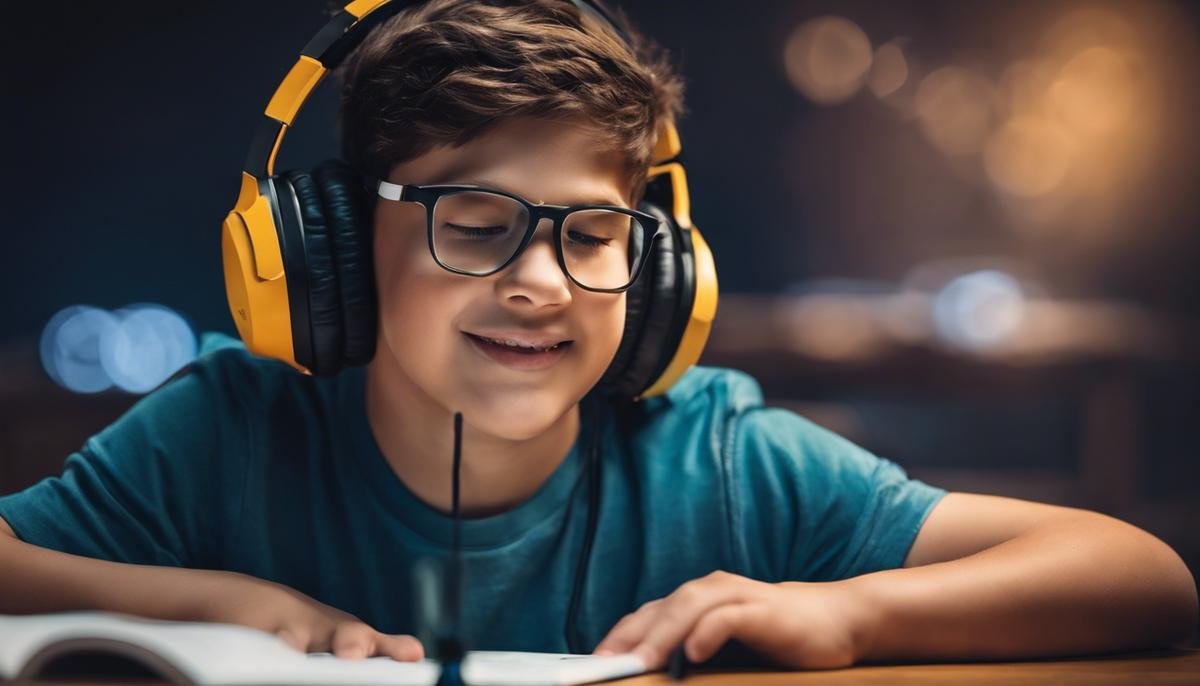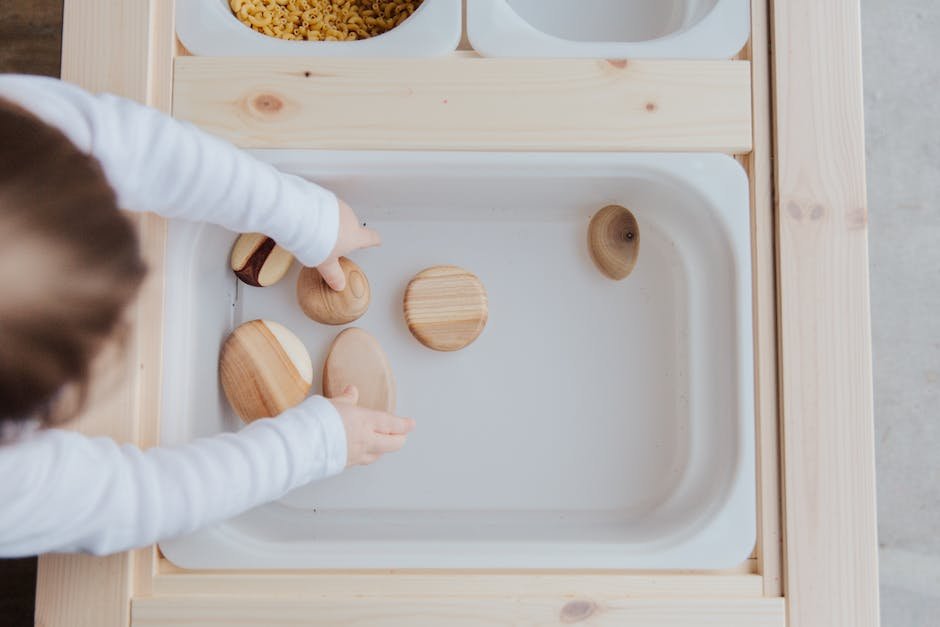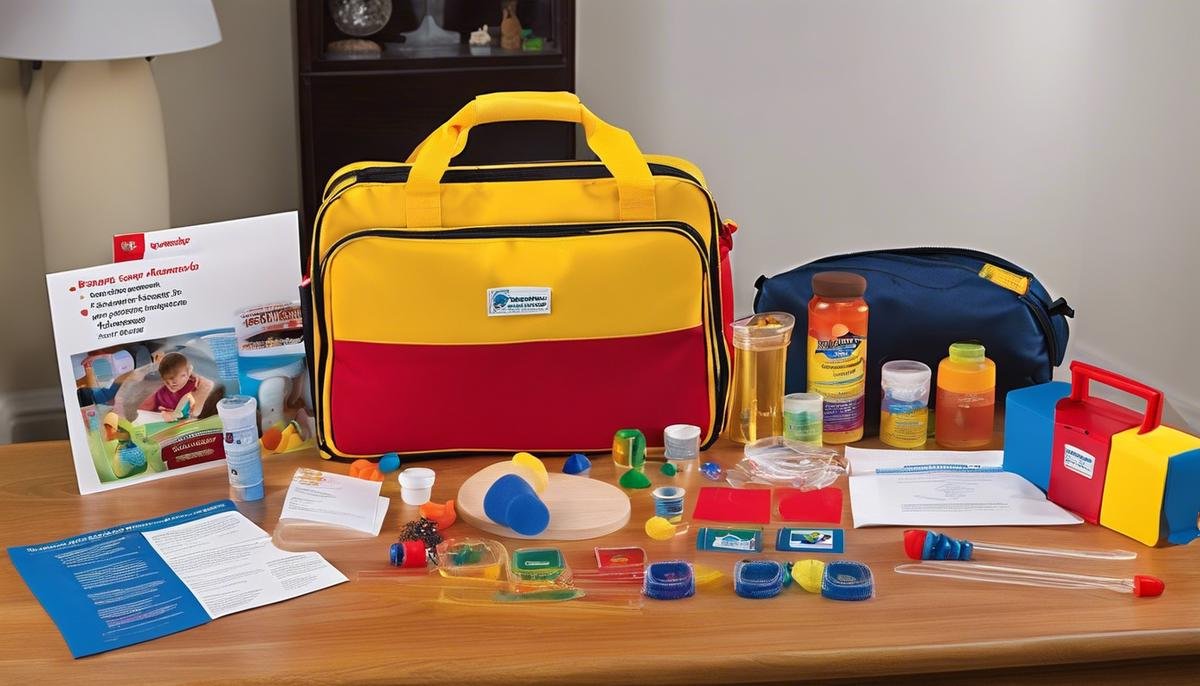
When we consider the kaleidoscope of human experience, the sensory realm is uniquely complex for individuals with autism. The task of making sense of the world’s barrage of sounds, sights, and textures can be a colossal challenge, one that extends far beyond personal discomfort and into the realm of safety. Recognizing this, it becomes imperative for families, caregivers, and the general public to cultivate a deep understanding of sensory processing in autism. This essay ventures into the heart of sensory processing disorder and how it intertwines with autism, offering a comprehensive guide designed to illuminate the sensory experiences of these individuals. With emphasis on creating a nurturing environment, both at home and in public spaces, we will unpack practical solutions and strategies to safeguard the wellbeing of those who experience the world through this unique sensory lens.
Understanding Sensory Processing in Autism
Sensory Processing in Autism: A Parent’s Guide to Understanding the Basics
As parents, we witness firsthand the unique challenges and joys that come with raising a child with autism. One aspect that often arises in parenting circles is sensory processing, particularly how it affects individuals with autism. Let’s dive into the heart of the matter and shine a light on what sensory processing involves, and how it intertwines with the autistic experience.
Sensory processing is the brain’s way of taking in, organizing, and interpreting sensory information from our surroundings. For most, this happens seamlessly. However, for individuals with autism, sensory processing can be akin to trying to listen to a radio station with constant static—it can be overwhelming, confusing, and sometimes downright distressing.
Many children with autism have a sensory processing disorder (SPD), which means they perceive sensory input such as light, sound, touch, taste, or smell differently. For instance, the gentle hum of a refrigerator might go unnoticed by one child, while for another, it’s as jarring as a fire alarm. Some may find a hug comforting, but for a child with sensory sensitivities, that same hug might feel like an unbearable squeeze.
These atypical reactions can manifest in various ways. Hypersensitivity, or ‘sensory avoiding,’ can lead to a child becoming distressed by things like bright lights or the buzz of a fluorescent bulb. On the flip side, hyposensitivity, or ‘sensory seeking,’ might mean a child craves intense sensory experiences, such as intense flavors or spinning in circles, to feel just right.
Understanding these sensory experiences is vital for several reasons. For one, it offers insight into certain behaviors that might otherwise bewilder us. That aversion to bath time could be a result of the water’s feel, not an aversion to cleanliness. Secondly, it allows parents, educators, and therapists to tailor environmental adjustments and coping strategies that can mitigate discomfort and anxiety, paving the way for more engaged learning and play.
For parents, this insight can be a beacon of understanding. It provides context for the times when a child may seem to overreact or withdraw. This awareness enables the creation of a more supportive and nurturing environment. Simple adjustments like dimming the lights, providing noise-canceling headphones, or offering weighted blankets can make a world of difference.
Building a sensory-friendly environment helps children with autism experience life with a bit more ease. It’s about fostering a space where they’re free to grow and thrive, all while being mindful of their sensory inputs. When sensory experiences are approached with understanding and care, it opens up a world of opportunities for comfort, connection, and joy.
We can always enrich our toolkit with more strategies and adjustments by connecting with other families, therapists, and educators on this journey. Remember, every child is unique, and what works for one may not work for another. It’s a path of patience and ongoing learning, but it’s a path that blooms with moments of triumph and delight. By embracing the sensory world of autism with open arms, we’ll continue to learn, adapt, and support our remarkable children on their extraordinary journeys.

Creating a Sensory-Friendly Home Environment
Oh, the joys (and the occasional oops!) of making a home that’s a haven for every member of the family, especially when some have unique sensory needs. Let’s dive into making a home more sensory-friendly to prevent overwhelm and accidents, holding hands with practicality and infusing it with a sprinkle of love and a whole lot of understanding.
First off, consider the color palette of your home. Muted, neutral colors can be soothing to the senses, unlike bright, bold colors which might be too stimulating. Think soft pastels or warm earth tones that invite calmness. Reflect on the vibe each room gives off, and when in doubt, those trusty paint swatches can be invaluable allies.
Lighting deserves a special shout-out because it’s more than just about seeing where one’s going. It’s about feeling good while getting there. Soft, natural lighting can be less harsh than fluorescent bulbs, which sometimes flicker and buzz like they’ve just had one too many coffees. If dimmer switches aren’t already best friends with your lamps and fixtures, it might be time to introduce them.
Textures. Ah, they’re the unsung heroes in our sensory landscape. A home can be a tapestry of tactile experiences. We’re talking cozy throws, plush rugs, and cushions that invite a touch—or a hug! But also remember that some textures can be overwhelming, so it’s helpful to have a variety of options available to accommodate everyone’s preferences.
Clutter, the arch-nemesis of a tranquil space, needs to be kept at bay. It’s not about having a home that looks like it jumped out of a magazine—far from it. It’s about creating clear spaces that help all family members feel unencumbered and at peace. Implementing smart storage solutions can make this task less of a chore and more of a joy.
Sound often plays in the background of our lives, but it can leap into the spotlight when it becomes disruptive. Soft background music or white noise machines can mask jarring sounds from the outside world. Consider soundproofing rooms that require an extra layer of quiet—or for those times when the family band decides to have an impromptu practice session.
Finally, safety is the cornerstone of a sensory-friendly home. Sharp corners can be menacing beasts, but they’re easily tamed with corner guards. Safety locks on cabinets and secure window guards can prevent accidents before they happen. Visual cues, like floor tape or soft lighting along pathways, can effectively guide someone through the space without overwhelming their senses.
Get the whole family involved in suggesting what changes to make. This not only creates a sense of teamwork but also ensures that the adjustments meet everyone’s sensory needs. Remember, making a home more sensory-friendly is a journey, an act of love, and a way to speak volumes without saying a word.
In this dance of light, color, texture, and space, each step towards a more sensory-friendly home is a step towards nurturing the wellbeing of loved ones. There’s no one-size-fits-all instruction manual, but with a dash of creativity, a dollop of understanding, and the endless resource of communal wisdom, a tapestry of sensory harmony is entirely within reach. Welcome home, to a space that embraces every unique rhythm of life.

Safety Strategies in Public Spaces
Navigating Public Spaces: Safety Tips for Children with Autism
When our loved ones with autism venture into public spaces, a sense of safety and well-being is paramount. Recognizing that each child with autism has unique needs, let’s explore strategies to keep them secure and content while out and about.
Firstly, preparation is key. Before leaving home, discuss the outing with the child in a manner that aligns with their communication abilities. Familiarize them with the destination using photos, maps, or social stories. Adequate preparation can help reduce anxiety and set expectations.
Identification aids play a crucial role. Have the child carry ID cards or wear identification bands that list their name, emergency contact details, and any pertinent medical information. Consider using GPS trackers or apps that can alert caregivers if a child wanders off.
Communication with staff at public venues is also invaluable. Notify them about the child’s specific needs and safety considerations. Many places now offer special assistance or accommodations for guests with autism, which can transform the experience for both the child and the family.
When it comes to vigilance in crowded spaces, it’s useful to establish safety protocols. Designate a meet-up spot in case of separation and practice this with the child. Encourage children who are verbal to memorize and recite a contact number, or have it written somewhere accessible.
Adapting to overstimulation is also important. Carry sensory tools that the child is familiar with, like noise-canceling headphones or a particular tactile object that provides comfort. These can be invaluable in managing sensory overload.
Last but not least, employing the buddy system cannot be overstated. Siblings, friends, or relatives can be fantastic allies in ensuring the child’s safety. They can serve as an additional set of eyes and ears and provide comfort to the child in unfamiliar or overwhelming situations.
Children with autism deserve to explore and engage with the world confidently. By implementing these measures, we’re not only offering them a shield of protection but also empowering them with the joy of adventure in public spaces. Remember, with the right strategies, the vibrant tapestry of the world outside becomes an accessible canvas for learning, exploration, and growth.

The Role of Sensory Tools and Aids
Navigating the World with Sensory Aids: A Guide for Families with Autistic Loved Ones
For many families with autistic members, the world can be an intense place filled with unpredictable sensory experiences. However, it is possible to smooth the edges of this reality by using sensory aids and tools that enhance safety and comfort for autistic individuals. Let’s explore the key tools and strategies that can empower individuals with autism to navigate their environment with greater confidence.
One critical tool for families is sensory aids that can be worn or carried. Items like weighted vests, noise-cancelling headphones, and sunglasses help manage sensory input and can be game-changers when visiting places that are bright, noisy, or crowded. For instance, weighted vests provide deep pressure that can have a calming effect, while noise-cancelling headphones reduce auditory overload during events or in noisy public spaces.
Social stories and visual schedules also play a significant role in enhancing safety and comfort. These tools prepare individuals for what to expect in a new or stressful environment and can help reduce anxiety. By creating a script of the anticipated events, visual elements help in understanding and sequencing the activities that might otherwise be overwhelming.
Another indispensable aid is the use of technology. There are numerous apps designed to aid communication for nonverbal individuals, to track location for safety, and to create visual schedules. The use of these apps not only reinforces a sense of autonomy but also adds an extra layer of security for parents and caregivers.
Personalizing sensory tools is essential. It could mean having a favorite texture or item on hand that provides comfort in times of stress, like a soft piece of fabric or a squishy stress ball. These familiar items can be incredibly soothing during unexpected overstimulation.
Transition objects become a bridge from home to the outside world. They help autistic individuals to move between spaces by providing a piece of their comfort zone they can take along. This could be anything from a favorite toy to a book or a handheld electronic game.
Lastly, tactile prompts and cue cards can assist with communication challenges, especially in noisy or visually distracting environments. Using these prompts can streamline interactions and make requests or needs clear to others when verbal communication might be difficult.
Incorporating these sensory tools and aids into family routines can significantly impact the day-to-day life of an autistic child or adult. It not only fosters independence but also gives them the tools they need to communicate their needs and manage sensory challenges. The inclusion of these tools can transform a potentially stressful outing into a comfortable and even enjoyable adventure.
By understanding and utilizing sensory aids, together families can create a nurturing space wherever they go, making sure everyone feels secure and comfortable in the expansive world outside their home.

Communication and Emergency Preparedness
Navigating the World with Sensory Tools: A Family’s Guide to Empowering Communication and Emergency Preparedness
How do we talk about sensory needs in a way that empowers individuals and prepare for emergencies that may toss predictability to the wind? It starts with compassion, awareness, and the courageous endeavor to craft a loving bridge between knowledge and application.
In the heart of every family lies the perpetual quest to communicate better and to ensure that each member’s needs are deeply understood and met. For individuals with sensory processing differences, this effort becomes even more paramount, particularly in the face of an emergency, where the usual comforts and routines may be upended.
Let’s delve into practical ways families can enhance communication around sensory needs and proactively gear up for unforeseen events.
First and foremost, embrace an open dialogue about sensory preferences at a time when stress isn’t at its peak. Family meetings can be a cozy setting for this exchange, perhaps during a relaxed weekend breakfast or an evening when everyone is gathered for a fun activity. This setting can pave the way for discussions around personal thresholds, sensory cues, and possible triggers in a safe, non-confrontational manner.
When it comes to emergency situations, advanced preparation is key. Craft an ’emergency sensory toolkit’ together. This could include comforting tactile items, special earplugs or muffs for auditory sensitivities, or items of a particular visual or olfactory appeal. Each person’s toolkit should be tailored to their sensory profile, involving them in the decision-making process to give a sense of control and reassurance.
Ensure that this toolkit is easily accessible and part of your family’s emergency plan, seamlessly integrating it into drills and practice evacuations. Communicate, too, with local emergency personnel ahead of time, providing them with a ‘snapshot’ of any sensory and communicative needs within the household. Such foresight can drastically reduce potential escalation during actual emergencies, facilitating a more calming environment for everyone.
It doesn’t end with the family. Advocate and educate those in the wider community, such as neighbors, teachers, and local support services about the centrality of sensory needs. Sharing knowledge about sensory tools and their vital role in your family’s life fosters understanding and creates allies who can support in times of urgency.
Moreover, consider how emergency alerts and communications can be received. Are there apps or devices that can provide visual or sensory-friendly alerts? Can text messages serve as a quieter alternative to loud alarms or sirens for an individual who is auditory sensitive? Investigating these options and incorporating them into your family’s plan aligns preparedness with sensory needs.
Finally, remember that confidence in this area is something that grows over time. By affirming and celebrating small successes—like the ability to utilize sensory tools during a loud event or an impromptu practice run of the family’s emergency plan—you reinforce a positive and agile approach to life’s unpredictability.
It’s a twofold journey—one that nurtures the unique sensory experiences of our loved ones and one that solidifies the peace of mind that comes with knowing you’re prepared for emergencies. Take the time to foster these discussions and plan together. After all, the strength of a family’s bond can turn yesterday’s challenges into today’s triumphs, one sensory-friendly strategy at a time.

Safeguarding individuals with autism from the often overwhelming sensorium of daily life requires vigilance, creativity, and compassion. By acknowledging the distinct sensory experiences faced by those with autism, we unravel layers of complexity and march towards creating a world that accommodates their unique needs. From the careful crafting of a sensory-friendly home environment to the embrace of tailored tools and aids, these approaches serve as lanterns in the dark, guiding toward a secure and comfortable existence. As communication paves the way for empowered self-advocacy and emergency preparedness, we fortify the foundation of safety. With knowledge as our ally and understanding as our compass, we make strides in offering a more inclusive and navigable landscape for individuals with autism, ensuring that each step taken is one closer to a realm where every sensory experience is not just manageable, but embraced.




